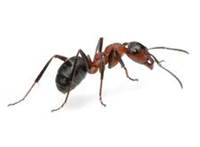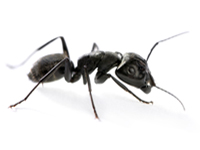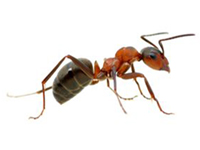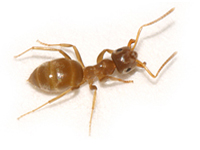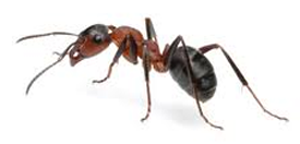
Size:
1/16 to 1/8 inches (1.5–3.2 mm)
Characteristics:
The Odorous House Ant is dark brown to black in color, has 12 segments in its antennae, no circle of hairs on tip of abdomen, no club on the antennae, one node, and has an uneven thorax when viewed from the side. Sometimes confused with the ghost ant which is smaller and not as dark in color.
The Odorous House Ant is tough; injured workers have been observed to continue living and working with little hindrance. Some queens with crushed abdomens still lay eggs, and there are documented instances of queens surviving without food or water for over two months. They also appear highly tolerant to heat and cold. When killed, these ants leave an odorous smell which leads to their nickname "Stink Ant."
Habitat:
Odorous House Ants nest outdoors in the soil under stones, logs, mulch, debris, and other items. Once inside your home, they will nest in wall and floor voids; particularly in moist or warm areas.
Life Cycle:
Little is known about the lifespan of the Odorous House Ant, though it has been shown that queens live at least 8 months (and probably much longer), workers at least a few months (and show every indication of living as long as queens), while males appear to live only approximately a week.
New ant colonies are started by a single queen that lays the eggs and tends the brood that develops into worker ants. Tending of the brood is then taken over by the workers, which shift the brood from place to place as moisture and temperature fluctuate in the nest. When workers forage for food for the queen and her young, they often enter houses and become a nuisance.
Control:
Control of Odorous House Ants should begin with an attempt to locate the origin of the ants. These ants are not hard to control, and most ant killers will solve problems, especially if controlled as soon as the problem is noticed. At this point, they could be put under control in just a few days. However, the longer someone waits, the larger the population is and the longer it will take to control the situation, possibly a few weeks. Standing water should be eliminated, as odorous house ants are attracted to moisture. Plants should be trimmed back so they cannot be used to get inside. Cracks, holes and joints should be sealed with polyurethane foam or caulk, especially those that are near the ground. Firewood, rocks and other materials should not be stored next to a home because it encourages nest building. People should be on the lookout for these ants in late winter and early spring (particularly after rain), as this is when they most commonly appear.

